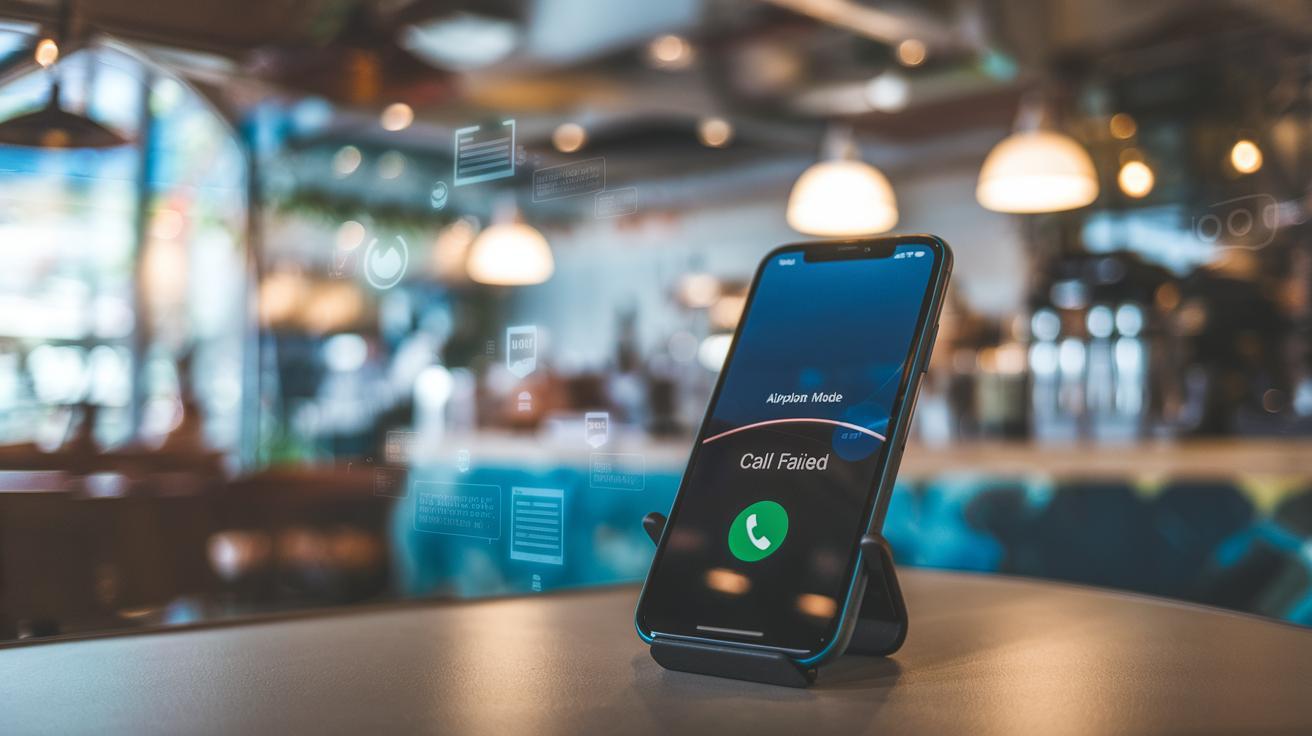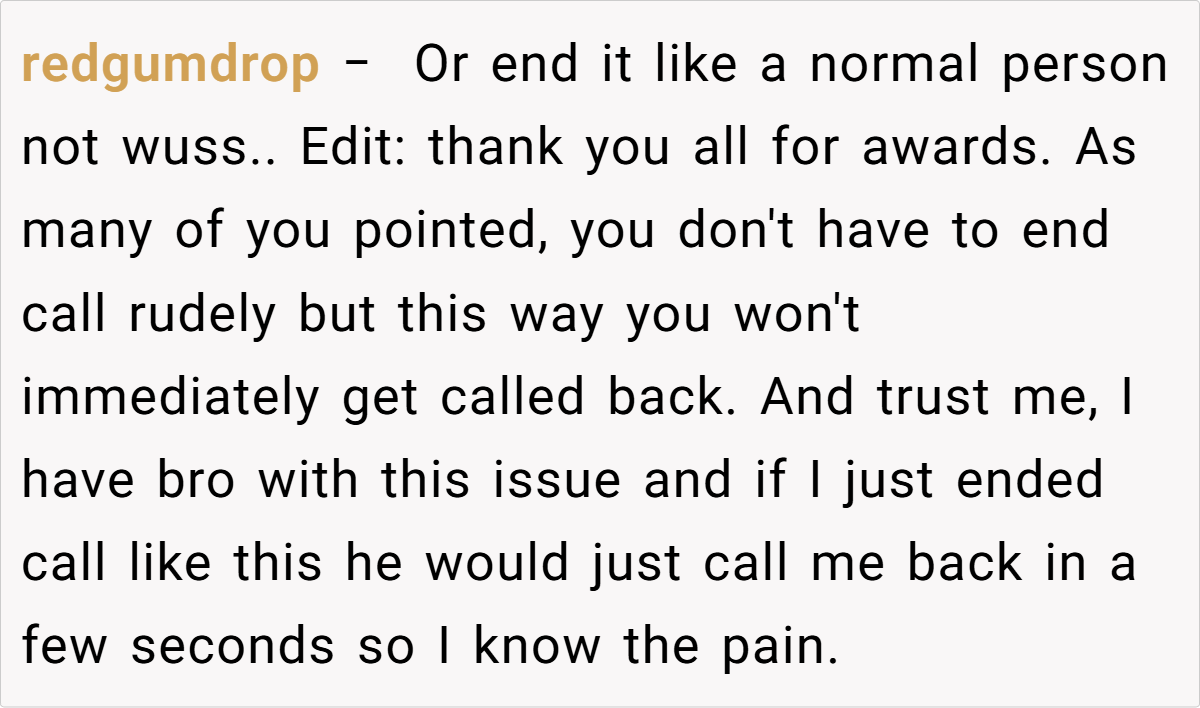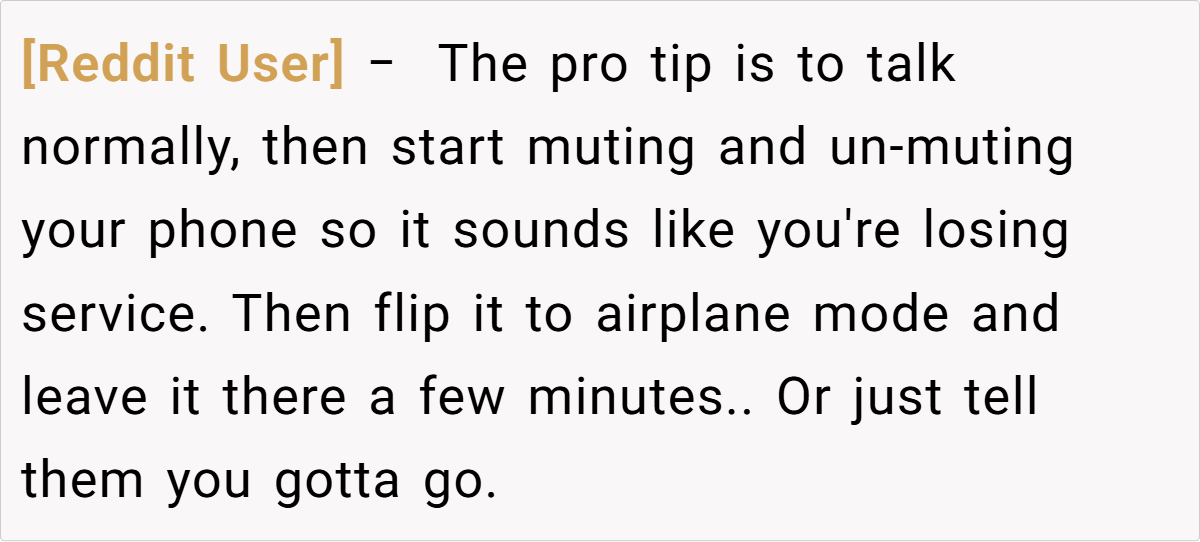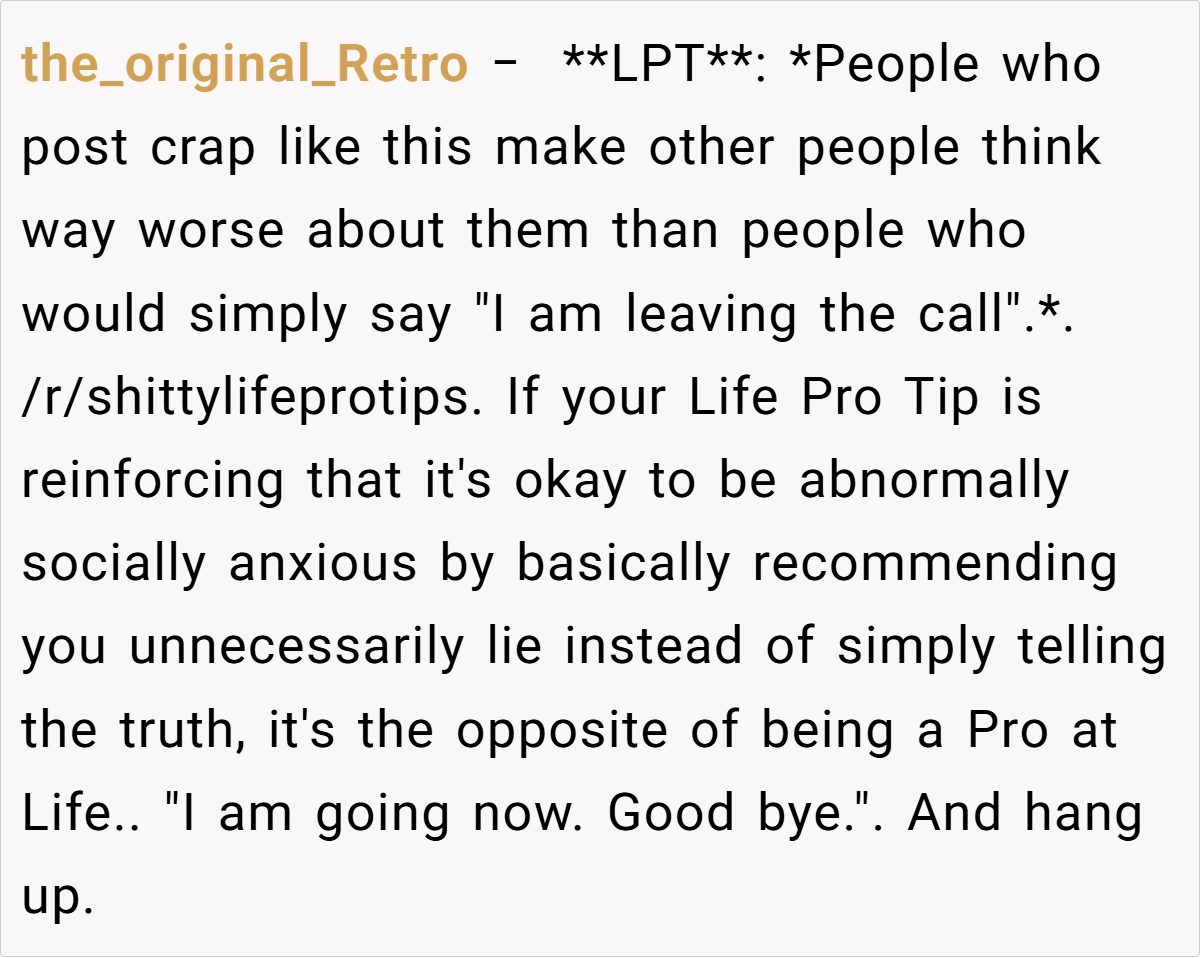Say Goodbye Without Saying Goodbye: The Subtle Exit Strategy for Annoying Calls
In today’s fast-paced digital world, even an irritating phone call can spark an ingenious escape plan. When your phone buzzes incessantly, the urge to avoid an awkward goodbye can be overwhelming. Instead of the conventional abrupt hang-up, imagine a scenario where a simple switch to airplane mode creates a mystifying “Call Failed” message, leaving the caller in a state of confusion.
This clever life pro tip not only offers a subtle exit strategy but also reflects our modern tendency to use technology as a buffer in uncomfortable situations. It hints at a broader commentary on digital communication—one where avoiding conflict sometimes means bending the rules in playful, unexpected ways.

‘LPT: if you’re stuck on an annoying call, put your phone on airplane mode instead of just hanging up. The other person will see “call failed” instead of “call ended”.’

At first glance, this tip may seem like a harmless workaround to escape an annoying call. Yet, it opens up a broader conversation about our evolving communication habits in the digital age. The notion of switching to airplane mode mid-conversation not only reflects a desire to dodge conflict but also highlights the sometimes comical extremes we go to in order to preserve our personal peace. It’s a perfect example of modern life’s subtle rebellion against conventional etiquette.
Diving deeper, this strategy offers a glimpse into our collective struggle with direct confrontation. In an era where digital interfaces mediate nearly every interaction, many of us have adopted inventive methods to sidestep uncomfortable scenarios. While the approach is playful, it underscores a shift in our interpersonal dynamics—favoring tech-enabled avoidance over honest, face-to-face dialogue. It raises an important question: are we gradually losing the art of straightforward communication?
Beyond the individual scenario, this tip mirrors a larger societal trend. A 2017 Pew Research Center study found that a significant majority of Americans now rely on mobile devices for almost all their communications, often prioritizing convenience over depth. This behavior isn’t confined to everyday life; even celebrities like Ryan Reynolds have joked about preferring texts over calls, hinting at a broader cultural shift. Such instances reveal how technology continuously reshapes our social norms.
In the words of Sherry Turkle, a renowned MIT professor and author, “Technology doesn’t just change what we do; it changes who we are.” This statement resonates deeply with the airplane mode tactic. By subtly disengaging, individuals not only avoid immediate confrontation but might also compromise genuine human connection. Turkle’s insight encourages a reflection on whether these digital escapes are merely temporary fixes or signs of a profound evolution in our communication practices.
For those caught between the urge to escape and the need for clarity, experts suggest striking a balance. Instead of relying solely on digital maneuvers, consider honest communication or setting clear boundaries in advance. Embracing technology mindfully can prevent misunderstandings while still offering a graceful exit when necessary. For further reading on effective communication strategies, you might explore resources like the Harvard Business Review’s tips on navigating digital interactions.
Here’s what the community had to contribute:
No discussion of this life pro tip would be complete without a peek into the lively opinions of the Reddit community. The original comments capture a blend of humor, critique, and candid advice—ranging from quips about handling calls “like a normal person” to reminders about the perils of passive-aggressive tactics. These popular opinions offer a spirited glimpse into modern communication quirks and leave us wondering: do they really reflect reality?









In conclusion, this creative life pro tip offers more than just a clever method for dodging unwanted calls—it serves as a window into our evolving digital communication landscape. It challenges us to think about how technology shapes our interactions and whether these workarounds are fleeting trends or harbingers of lasting change. What would you do if you found yourself in a similar situation? Share your thoughts, experiences, and any clever strategies you’ve employed in the comments below!

